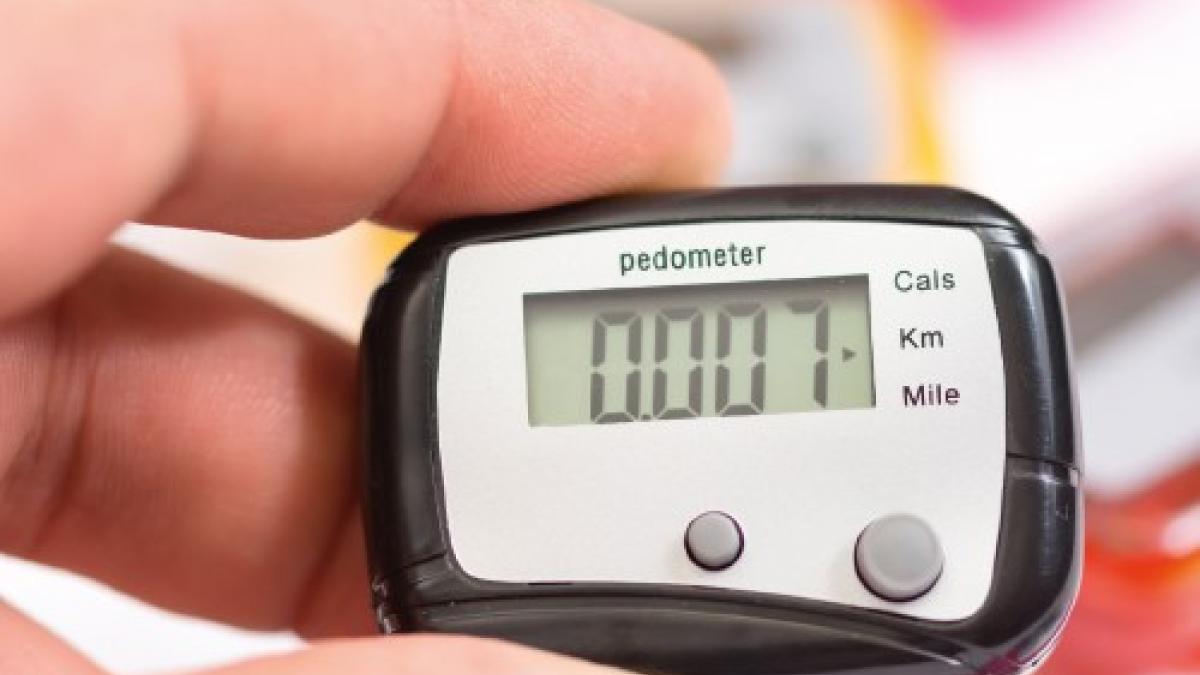Physiotherapy journal editor Michele Harms and Caroline White report on recent research.

Pedometers tackle RA fatigue
Giving pedometers to people with rheumatoid arthritis (RA) boosts their physical activity, even without the provision of step targets, and helps curbs fatigue, suggest the results of a clinical trial of 96 people with the condition.
Participants were randomly assigned to written and spoken advice (n =28); or use of a pedometer and a step diary with (n = 34) or without step targets (n = 34). Their progress was tracked for 21 weeks to see which of these approaches might have any impact on disease activity, pain, physical function, depressive symptoms and fatigue.
At the start of the study, participants were only clocking up around 5,000 daily steps; and in half of them, the tally was under 4,000.
The number of average weekly steps fell over the monitoring period in those given advice alone, but increased significantly in both groups given pedometers. By week 21, the proportion of people in these two groups who had been classified as sedentary had fallen by 30 per cent. And the number who met the criterion for a healthy level of activity – at least 8,000 steps a day – had doubled.
And fatigue scores, measured by the PROMIS Fatigue Short Form 7a questionnaire, fell substantially in over half of those given a pedometer. Physical function, and pain and stiffness also improved, as did depressive symptoms.
The US researchers emphasise that fatigue can significantly impair quality of life and restrict activities in people with rheumatoid arthritis, but there are few effective treatments for it. Their findings strengthen the theory that increasing physical activity by walking not only has important beneficial effects on fatigue but also on other rheumatoid arthritis symptoms, they conclude. Katz P et al. Physical activity to reduce fatigue in rheumatoid arthritis: A randomised, controlled trial Arthritis Care & Research 2017.
Journal Special
Michele Harms looks at a special themed issue of Physiotherapy Journal on musculoskeletal physiotherapy and low back pain. The Journal’s section on low back pain has six papers exploring functional restoration, guideline based advice, dry needling, video games based exercises, taping and biopsychosocial primary care intervention (Back on Track). The general section has a further eleven papers on physiotherapy and musculoskeletal conditions.
A low back research team based at La Trobe University in Australia conducted a study of individualised functional restoration in combination with guideline-based advice comparing it with advice alone in this targeted group of patients.
As part of a randomised controlled trial the team recruited 96 people from 15 primary care physiotherapy clinics. They conducted 10 sessions of functional restoration over 10 weeks and compared with two sessions of advice alone. They noted differences, favouring the functional restoration programme, in back and leg pain. They also noted that improvements in the Oswestry Disability Index were maintained 26 weeks later. Chan AYP, Ford JJ, Surkitt LD, Richards MC, Slater SL, Davidson M, Hahne AJ.
Dealing with shoulder pain
This is the first of three papers focusing on the shoulder in this issue of the Journal. Manchester-based researchers recruited 120 patients with shoulder pain and randomised them to three intervention groups.
Participants attended three appointments over six weeks, with the exercises progressed in difficulty at each appointment. Each completed three sets of 10 repetitions of their allocated exercises, twice each day. All participants were also taught stretching exercises for the anterior and posterior shoulder capsule.
There were some small differences in engagement between the groups but the authors report that open chain loading, closed chain loading and minimally-loaded range of movement exercises all seem to be effective in bringing about short term changes in pain and disability in patients with rotator cuff tendinopathy. Heron SR, Woby SR, Thompson DP. Comparison of three types of exercise in the treatment of rotator cuff tendinopathy/shoulder impingement syndrome.
‘Triage and treat’ service
Harland and Blacklidge report the results of a national survey which explored physiotherapist and GP attitudes towards Physio Direct services. This phone based service, a relatively new phenomenon according to the authors, comprises musculoskeletal triage and treat services.
The survey sought the views of 488 physiotherapists and 68 GPs. The findings suggest that these groups have generally positive attitudes towards Physio Direct services, particularly if they have previous experience of them.
However, they also found that significant proportions of respondents believed patients would still need to be seen face-to-face at some point. Based on their results, they recommend that patients should be given a choice whether they access Physio Direct services or not. Nicholas Harland N, Blacklidge B Physiotherapists’ and General Practitioners’ attitudes towards ‘Physio Direct’ phone based musculoskeletal physiotherapy services: a national survey.
More information
These reports feature online in the CSP journal, Physiotherapy. CSP members can access them free online, via the CSP website.
Comments & conclusions
- The survival rate for heart failure continues to be worse than it is for certain common cancers, reveals a study of 56,658 adults in Scotland, whose heart health was tracked for an average of 10 years. Among men with the condition, survival was worse than that for prostate or bladder cancers. For women it was worse than it was for breast cancer and bowel cancers. Mamas A et al. European Journal of Heart Failure 2017.
- Low-dose aspirin doesn’t seem to guard against cognitive decline or dementia, finds a pooled analysis of eight relevant studies involving 36,000 people, with an average age of 65. Veronese N et al. Journal of the American Geriatrics Society 2017.
- A fibre-rich diet may help lower the risk of painful knee osteoarthritis, finds observational research of more than 5,000 participants in two different long term studies. The risk was between 30 and 61 per cent lower among those eating the most fibre compared with those eating the least. Dai Z et al. Annals of the Rheumatic Diseases 2017.
Author
Caroline White and Michele HarmsNumber of subscribers: 2
